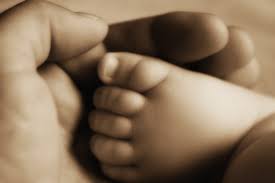Introduction: Marriage and Family life have a central role in the life and mission of the Church. This is rooted in the nature of marriage which is revealed as the fundamental human community made in the image and likeness of God (cf. Gen 1:26-28), which has been raised by Christ to the level of a Sacrament between the baptized as a sign of His spousal union with the Church (cf. Eph 5: 31-32). Consequently, the Church has a great responsibility to provide a Marriage Preparation Program to assist couples in preparing for their vocation to marriage.
Purpose of this Policy: Because couples asking the Church to witness their marriage are at various stages of faith development, the following identifies what is to be in place for an adequate program of formation which will assist couples in their preparation for marriage. This policy promotes the following values: the dignity of marriage, the couple’s right to marry, their call to holiness through mutual support in their marital vocations, the role of their marriage in the life and mission of the Church, and the pastoral care of couples preparing for marriage.
I. Length of Period of Preparation: Couples are to notify their parish priest of their plans to marry as soon as possible after the engagement, but no less than six months prior to their wedding date.
II. The Parish Priest and Marriage Preparation Team:
A. Couples are required to attend a Marriage Preparation Program conducted either by the parish or the Archdiocese. The priest and his team will determine the content and format of the parish marriage preparation program. If the couples attend the Archdiocesan marriage preparation program the priest will meet with the couple at least two additional times to ensure their adequate preparation. B. If the parish does not have the personnel or resources to provide its own marriage preparation program, it is recommended that it join with a neighboring parish or parishes. C. Additional support is provided by the Archdiocesan Regional Marriage Preparation Program and Catholic Engaged Encounter, which assist parishes by providing basic components of marriage preparation to couples.
III. Program Components: The components for any Catholic marriage preparation program are to include presentations on:
A. Church teaching on the nature and purpose of marriage; B. Spirituality of marriage and family life; C. Communication/interpersonal skills and values in marriage: family of origin issues, finances, career, early marriage adjustments, time management, in-laws; D. Sexual intimacy as interpersonal communion which is unitive and procreative; E. Natural Family Planning which builds upon Church teaching on human sexuality and the principle of “Responsible Parenthood.” It is recommended that this include a witness component from a NFP practicing couple. F. A premarital inventory, such as FOCCUS, should be administered to and reviewed with the couple to assist them with their communication and mutual understanding. As part of his meetings with the couple, the priest will also complete the Prenuptial Investigation Form and assist the couple in preparing for the liturgical celebration of their marriage.
IV. Special Circumstances: The following are special circumstances which require adaptation of the marriage preparation program:
A. Cohabitation: Couples who are cohabiting should be informed of the theological and sociological reasons that indicate why cohabitation prior to marriage can undermine the future success of their marriage. They are to be strongly encouraged to separate during the remaining period of their engagement. This may not be possible for various reasons. They then should be encouraged to abstain from sexual relations. Regardless, the Catholic parties should be encouraged to receive the Sacrament of Reconciliation so that they are in the state of grace to receive and confer the Sacrament of Marriage. (See Appendix on Cohabitation) B. Second Marriages: People who have received annulments, are divorced, or widowed, have special circumstances entering into a second marriage. Each of these is to be treated with sensitivity and an awareness of their particular situations. C. Pregnancy: It should be determined whether the pregnancy is the motivating reason for the decision to marry. This also presents problems in that some couples are living together. Separation for the couple may be very difficult for the expectant mother. D. Couples with Children: Couples may have children of their own or from a previous relationship. Each is in a different situation and should be a concern for the priest and the team. E. Ecumenical and Interfaith Marriages: When the couple belong to different denominations or religions they may wish, for the sake of harmony, to contact the minister, rabbi, or representative of the non-Catholic party concerning their marriage. The non-Catholic party is to be made aware of the responsibility of the Catholic party to do all in his/her power to have the children baptized and raised in the Catholic faith. F. Older Couples: These couples are in a different period of their life cycle than the young adults. There should be sensitivity as to whether it is necessary for them to attend one of the formal Marriage preparation instructions. Private discussions may be preferable.
V. Situations which may cause a priest to delay or refuse to witness a marriage:
A. Denial of the “Goods of Marriage” which are: the unity and indissolubility of marriage, the fidelity of conjugal love, and the openness to fertility. (Catechism of the Catholic Church, 1643-1654) B. Inability to provide the consent which marriage requires: lack of maturity, age, mental/emotional disability, drug abuse, etc.; C. Canonical impediments which are not dispensed; D. Refusal to cooperate with the priest and Marriage Preparation team.
Appendix on the Pastoral Care of Cohabiting Couples Preparing for Marriage
As couples come to the Church to prepare for marriage one of the greatest pastoral challenges the Church encounters is the phenomenon of cohabitation. Current research (2004) estimates that there are 5.080 million cohabiting couples in the United States today. This represents 8% of all coupled households. By comparison there were 2.856 million cohabiting couples in 1990. Additional research indicates that 25% of women ages 25-39 are living with a partner, and an additional 25% have lived with a partner in the past.(1)
Concurrent with the rise in cohabitation has been the decline in marriage. Statistics for 2004 show that there are 39.9 marriages per 1000 unmarried women 15 and older in the United States. In 1990 there were 54.5 marriages per 1000 unmarried women 15 and older. In 1970 there were 76.5 marriages per 1000 for unmarried women 15 and older.(2)
Conventional wisdom, shared by most young people today, is that by living together couples have the opportunity to test their compatibility, and consequently more greatly ensure future marital success. Contrary to this perspective research has demonstrated that premarital cohabitation is associated with lowered marital stability. Research conducted at Yale and Columbia University found that, “The overall association between premarital cohabitation and subsequent marital stability is striking. The dissolution rate of women who cohabit with their future spouse is, on average, nearly 80 percent higher than the rate of those who do not.”(3)
Two dynamics appear to be at work as to why cohabitation undermines marital stability. First, that it is self-selecting, that is, it attracts those whose personal characteristics militate against a healthy and stable marriage. The second cause is that the experience of cohabitation itself undermines the long term commitment and maturity required to make marriage work.(4)
Over half of all marriages today are preceded by cohabitation. The question arises as to how to minister to these couples, most of whom have a nominal relationship with the Church. Additionally, society’s acceptance of cohabitation as a normal form of marriage preparation reinforces this practice, and the couple may be unaware of any negative judgment from the perspective of the Church.
The guiding principles in responding to this pastoral issue are twofold: the Church’s concern for the well being and future marital success of the couple, and the dignity of the vocation of marriage. In light of these principles, and especially sensitive to the potential of alienating the couple, care should be taken to welcome them, applaud their decision to marry, get to know them, and pray with them. Once a context of trust and mutual respect has been established the couple has the right to receive a basic catechesis on Church teaching concerning the good news about marriage and family life. This will include the dignity of human sexuality which expresses total self-giving (faithful, fruitful, mutual, and enduring), and why this dignity can only be respected within the context of the covenant of Marriage. Additionally, a basic understanding of the sociological reasons concerning the negative influence cohabitation can exert upon marriage should be explained. Finally, the couple should strongly be encouraged to discontinue cohabiting, or, if this is not possible, to at least refrain from sexual relations until their wedding day.
Recommended Resources:
The Bishops of Pennsylvania, Living Together (Pennsylvania Catholic Conference, 223 North Street, Box 2835, Harrisburg, PA 17105, 717-238-9613, www.pacatholic.org)
Notes:
1. David Popenoe and Barbara Dafoe Whitehead, “The State of Our Unions: The Social Health of Marriage in America,” The National Marriage Project, the State University of Rutgers, 2005, pg. 20 2. Ibid., pg. 16 3. Neil Bennett, Ann Blanc and David Bloom, “Commitment and Modern Union: Assessing the Link between Premarital Cohabitation and Subsequent Marital Stability,” American Sociological Review 53 (1988): pgs.127-138 4. Parenthetically, a recent study of women concluded that cohabitation, when limited to a woman’s future husband, is not associated with an elevated risk of marital disruption. The National Marriage Project, pg. 21


